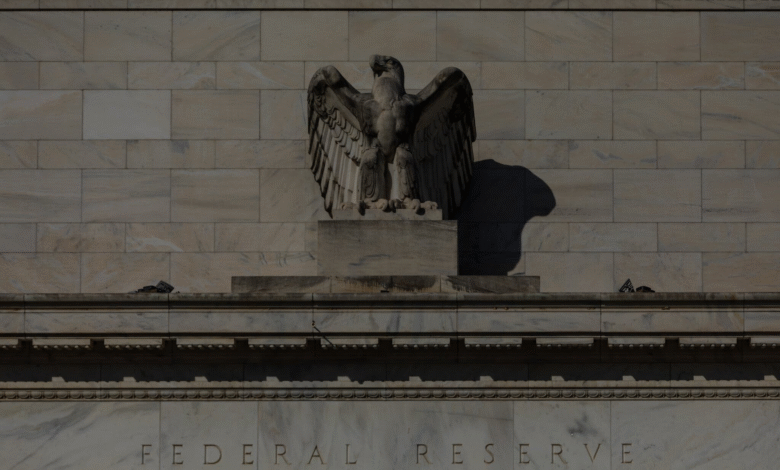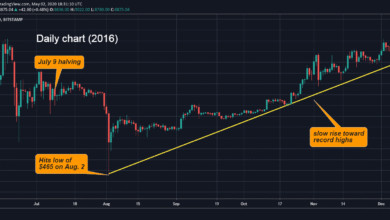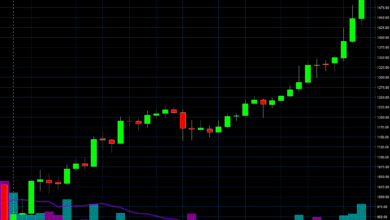Federal Reserve Interest Rates: Powell Warns of Shifts

Federal Reserve interest rates have become a critical focal point in the ongoing dialogue about U.S. economic policy, as Fed Chair Jerome Powell recently highlighted. At a policy conference, Powell noted that as the economy continues to evolve, we’re likely to see long-term interest rates rise amid changing circumstances, including frequent supply shocks. Such elements pose significant challenges not only to the economy but also to central banks aiming to stabilize inflation expectations. Historically aggressive interest rate hikes have marked the Fed’s response to the recent surge in inflation, indicating a shift in monetary strategies. As we navigate this complex landscape, the implications of these interest rate decisions will undoubtedly shape future economic conditions across the board.
Interest rates established by the Federal Reserve serve as a cornerstone of monetary regulation, impacting everything from borrowing costs to inflation management. Jerome Powell, the leading figure at the Fed, has emphasized that the dynamic nature of today’s economy will likely necessitate more frequent adjustments to these rates. As the central bank assesses the repercussions of previous interest rate hikes and the potential for ongoing supply shocks, the focus remains sharply on maintaining effective economic policies. This evolving situation underscores the Fed’s need to balance growth with inflation expectations, all while reinforcing clear communication strategies to manage public perception and confidence. The review process currently underway is set to redefine how the Federal Reserve addresses the intricate relationship between rate adjustments and economic stability.
The Future of Federal Reserve Interest Rates
Federal Reserve interest rates are poised for a shift as Fed Chair Jerome Powell acknowledged in his latest remarks. With the economy evolving and new supply shocks anticipated, the landscape for monetary policy is in flux. Powell’s comments suggest that interest rates may not only rise but could do so more frequently, complicating the economic climate for households and businesses alike. The prospect of higher interest rates is being viewed as a necessary step to combat rising inflation, which the Fed is currently grappling with after a period of historically low rates.
Moreover, Powell’s expectations underline the complexity of current economic conditions, characterized by persistent inflationary pressures. This marks a stark contrast to the near-zero rate environment that prevailed following the 2008 financial crisis. As the Fed seeks to stabilize the economy through interest rate adjustments, market participants will need to recalibrate their expectations regarding borrowing costs and investment strategies in light of these ongoing changes.
Understanding Interest Rate Hikes and Inflation Expectations
The Fed’s recent history with interest rate hikes is a critical component of its strategy to manage inflation expectations. Jerome Powell has emphasized that while current inflation rates seem to be aligning with the Fed’s long-term target of 2%, the central bank remains vigilant. The challenge lies in managing consumer and investor expectations about future inflation; if individuals believe prices will continue to rise, it can influence their spending and saving behaviors. This expectation has a direct impact on the Fed’s decision-making processes regarding interest rates.
Interest rate hikes serve as a key tool for the Fed to rein in inflation that threatens economic stability. In 2020, Powell and his team implemented a flexible average inflation target strategy, which allowed for above-target inflation in pursuit of greater employment gains. However, as the reality of surging inflation set in post-pandemic, the central bank had to swiftly pivot and enact aggressive rate hikes to counteract overheating in the economy. This ongoing balancing act showcases the Fed’s commitment to maintaining economic equilibrium while adapting to new challenges.
Jerome Powell’s Economic Policy Approach
Jerome Powell’s economic policy approach has been underscored by his focus on understanding and addressing supply shocks and inflation dynamics. He warns that frequent supply shocks could complicate the Fed’s ability to achieve its dual mandate of stable prices and maximum employment. Such complexities require the Fed to carefully navigate its policy framework, as the unpredictability of these shocks could necessitate a more responsive and flexible approach to interest rate adjustments.
In his remarks, Powell expressed an awareness that past frameworks may not adequately capture the current realities of the economy. Given the significant changes since the review’s last update in 2020, there is a call for an evolution in how policy is crafted and communicated. Acknowledging that inflation was initially viewed as transitory, the Fed is reevaluating its stance to ensure that future economic conditions are met with informed and timely interventions.
Impact of Supply Shocks on Monetary Policy
The potential for increased supply shocks poses notable challenges for the Federal Reserve, as highlighted by Powell’s recent comments. Such shocks can arise from a variety of factors, including geopolitical tensions, natural disasters, and even global pandemics. These unforeseen events can disrupt supply chains, leading to inflationary pressures that the Fed must respond to. The ability to anticipate and react to these shocks is critical in shaping an effective monetary policy.
Moreover, the Fed’s review process will consider how to address shortfalls in achieving inflation and employment objectives amid these supply disruptions. Powell emphasized that while the economic landscape remains uncertain, the need for effective communication becomes more paramount. By clearly articulating the challenges associated with supply shocks, the Fed can help manage public expectations and foster greater confidence in its decision-making.
Evaluating the Fed’s Communication Strategy
Jerome Powell has acknowledged that while the Federal Reserve’s communication strategies are generally viewed as effective, there is always room for improvement, especially in the context of responding to economic shocks. As the landscape shifts due to inflationary pressures and potential disruptions, clear communication can play a pivotal role in guiding market expectations and maintaining stability. Powell indicated that the Fed will explore ways to enhance its communication to reflect the evolving economic landscape.
Effective communication tools can mitigate uncertainty and inform the public about the Fed’s assessments and forthcoming policy actions. By establishing a dialogue around the complexities of inflation and interest rates, the Fed aims to build trust and reinforce its commitment to transparency. This proactive approach in articulating its economic outlook will be crucial as the central bank navigates the challenges posed by ongoing supply shocks and inflationary volatility.
Inflation Management and Economic Stability
Managing inflation has become a top priority for the Federal Reserve, especially as the economy demonstrates signs of overheating. The Fed’s previous strategy of maintaining low interest rates came under scrutiny as inflation surged unexpectedly. Powell has pointed out that the historical context of the 2010s, characterized by stable prices, has changed dramatically, necessitating a re-evaluation of how the Fed approaches inflation management today.
The balance the Fed seeks to achieve involves not just controlling inflation, but fostering an environment conducive to employment growth. Powell’s remarks reflect a deep understanding of the relationship between interest rates and inflation dynamics, suggesting that a cautious approach toward rate hikes is essential in nurturing sustainable economic expansion. Balancing these objectives is critical, as an overly aggressive stance could stifle growth while an overly lenient approach could exacerbate inflation.
The Long-Term Outlook for Interest Rates
As the Fed embarks on a policy review, the long-term outlook for interest rates remains uncertain. Powell’s insights indicate that a return to the near-zero interest rates of the past decade is unlikely, particularly as inflation continues to pose challenges. Economists are weighing how long and how high the Fed must raise rates to cement a stable inflation outlook while considering the ramifications for economic growth.
The variability in interest rate expectations suggests that the financial markets must stay adaptive to policy shifts. This heightened volatility can impact everything from borrowing costs to investment strategies, prompting stakeholders to reassess their positions in response to the evolving economic climate. As Powell has noted, the Fed’s proactive measures will play a significant role in shaping the trajectory of interest rates in the years to come.
Revisiting the Fed’s Framework for Policy Review
The Federal Reserve’s ongoing review of its policy framework is key to adapting to contemporary economic challenges. Since the last update in 2020, the ramifications of the pandemic and subsequent inflationary pressures have necessitated a reassessment of the tools and strategies used to pursue the central bank’s objectives. Powell’s acknowledgments of changing conditions reflect the need for a more robust approach to monetary policy that accounts for nuanced developments in the economy.
This comprehensive review aims to refine how the Fed articulates its future expectations, taking into consideration lessons learned from past experiences with inflation and interest rates. As the Fed evolves its framework, it seeks to ensure that its policies not only address current economic realities but also prepare for unforeseen challenges that may arise in the future.
The Balance Between Employment and Inflation Goals
Achieving a balance between employment and inflation targets is a perennial challenge for the Federal Reserve. Powell’s remarks reflect an acute awareness of the delicate act required to foster economic growth while keeping inflation in check. As supply shocks and inflationary pressures emerge, the Fed’s commitment to maintaining this balance will be essential in its decision-making processes.
The challenge lies in the Fed’s dual mandate: to promote maximum employment while stabilizing prices. Powell has indicated that the ongoing review will assess how to effectively tackle shortfalls in both objectives, particularly as the economic landscape continues to evolve. As the Fed navigates these complexities, it must maintain a vigilant stance toward the implications of its policies on the broader economy.
Frequently Asked Questions
What are the recent trends in Federal Reserve interest rates under Jerome Powell’s leadership?
Under Jerome Powell’s leadership, the Federal Reserve interest rates have seen historical aggressive hikes due to rising inflation. Since December 2024, the overnight lending rate has fluctuated between 4.25% and 4.5%. Powell indicated that as the economy evolves, long-term interest rates are likely to rise further, making it a challenging environment for economic policy.
How do supply shocks impact Federal Reserve interest rate decisions?
Supply shocks can complicate Federal Reserve interest rate decisions by creating volatility in inflation and economic growth. Jerome Powell highlighted that we may be entering a period of more frequent supply shocks, requiring the Fed to balance managing inflation expectations with fostering employment through policy adjustments.
What is the significance of inflation expectations in relation to Federal Reserve interest rates?
Inflation expectations are crucial for Federal Reserve interest rates as they guide the central bank’s monetary policy. Jerome Powell noted that while long-term inflation expectations align with the Fed’s 2% target, the potential for volatile inflation suggests that the Fed may face challenges in returning to near-zero rates.
How has Jerome Powell’s stance on interest rate hikes changed since the COVID-19 pandemic?
Since the COVID-19 pandemic, Jerome Powell’s stance has shifted towards implementing aggressive interest rate hikes to combat surging inflation, which had initially been viewed as transitory. The need for swift adjustments reflects a significant change in economic policy to address the new realities of the post-pandemic economy.
What are the implications of the Federal Reserve’s policy framework review for interest rate policy?
The ongoing review of the Federal Reserve’s policy framework, led by Jerome Powell, aims to refine how interest rate policies are communicated and adjusted. This review will consider the impacts of factors like supply shocks and inflation shortfalls, setting the stage for a more responsive and transparent approach to future interest rate decisions.
What does Jerome Powell mean by a ‘flexible average inflation target’ in relation to Federal Reserve interest rates?
Jerome Powell refers to a ‘flexible average inflation target’ as a policy that allows inflation to exceed the normal target to promote full employment. This approach was adopted in the summer of 2020, but as inflation surged post-pandemic, it necessitated a series of interest rate hikes, highlighting the adaptability required in economic policy.
What is Jerome Powell’s outlook on the future of Federal Reserve interest rates?
Jerome Powell’s outlook suggests that the Federal Reserve interest rates may continue to rise due to evolving economic conditions and persistent supply shocks. He noted that the return to near-zero interest rates seems unlikely in the foreseeable future, emphasizing the importance of managing inflation expectations as part of the Fed’s economic policy.
How do Federal Reserve interest rates affect employment and inflation?
Federal Reserve interest rates play a critical role in balancing employment and inflation. Jerome Powell has stressed that the Fed’s adjustments in interest rates are aimed at maintaining this balance, especially during times of supply shocks, to foster maximum employment while controlling inflation expectations.
Why did the Federal Reserve maintain low interest rates for seven years after the 2008 financial crisis?
Following the 2008 financial crisis, the Federal Reserve maintained low interest rates near zero for seven years to stimulate economic recovery and encourage borrowing and spending. This strategy was aimed at combating high unemployment and reviving economic growth, but has shifted significantly with recent inflation challenges.
What communication strategies might the Federal Reserve adopt based on Powell’s recent comments?
Based on Jerome Powell’s comments, the Federal Reserve might adopt improved communication strategies that effectively convey uncertainty and economic outlook, especially during periods of significant shock. Enhancing clarity around interest rate decisions and economic policies will be a priority to ensure market participants understand the Fed’s approach.
| Key Point | Details |
|---|---|
| Long-term interest rates | Fed Chair Jerome Powell predicts an increase in long-term interest rates as the economy undergoes changes. |
| Supply shocks | Powell warns of more frequent, potentially persistent supply shocks affecting the economy and central bank policies. |
| Inflation expectations | Long-term inflation expectations are in line with the Fed’s 2% target. |
| Interest rate history | After the 2008 financial crisis, the Fed kept rates near zero for seven years, with recent fluctuations between 4.25% and 4.5%. |
| Policy framework review | Current review aims to revise the Fed’s approach to policy and communication based on changing economic conditions. |
| Flexibility in policy | A flexible average inflation target strategy was introduced in 2020 but needs reassessment due to rising inflation. |
| Effective communication | The Fed prioritizes enhancing communication regarding economic uncertainties and future expectations. |
Summary
Federal Reserve interest rates are poised for change as Chair Jerome Powell indicates a likely rise in long-term rates amidst evolving economic conditions. With a focus on managing inflation and employment amidst potential supply shocks, the Fed’s upcoming review of its policy framework is crucial. As the central bank adapts to significant shifts in the economic landscape, effective communication and strategic planning become imperative to ensure stability and responsiveness in its monetary policies.




